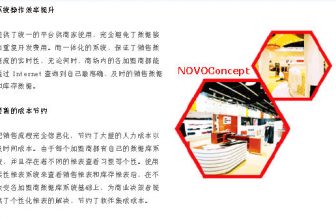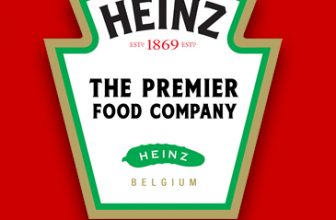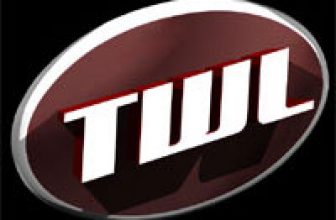
Texas Instruments (TI) successfully completed the first EPC second-generation compliance project
[ad_1]
As the industry’s leading supplier of graphing calculators, scientific calculators and financial calculators, Texas Instruments Educational and Productivity Solutions (E&PS) became the first company to provide Wal-Mart with EPCglobal for cargo transportation in January 2006. Supplier of the second-generation standard tag. Zebra’s RFID printer/encoder helped them achieve this goal.
Chris Parker, head of TI’s compliance tag application project, said: “We are at the forefront of the second generation, but it’s ridiculous that this has become a challenge we need to face. We have found that those who can really provide The number of companies that can support our second-generation technology does not match what it claims.”
Facts have proved that Texas Instruments E&PS was fortunate to find their favorite partners, and these partners are also very familiar old friends. The excellent support and first-to-market products of Zebra Technologies (TI’s long-term partner) and Texas Instruments RFiD Systems (an independent business unit in the TI family) together helped TI E&PS achieve its goals, making it the first to use the second generation The label marks the supplier of the product.
TI E&PS has adopted a different approach from most other companies to make tag applications meet various requirements. The entire testing and development process completely adopts the second-generation standard instead of temporarily using other RFID protocols, and waits until the second-generation is available. Upgrade. The decision to transition directly to the second generation prompted TI to start using many beta versions of tags and devices. It is a challenge to find a company that can provide technology within the deadline set by the project timetable.
Tom Shields of the Educational Products Division of Texas Instruments said: “Our goal is to meet the various regulations and requirements of our customers before the deadline, and to send a positive message to Walmart that we are their truly excellent partners. With this goal, we now need to face many new things for everyone.”
For example, when Texas Instruments E&PS’s product shipments are less than one pallet, they will shrink the pallet using a packaging process with a temperature exceeding 350ºF. TI’s work team is worried about whether the second-generation tag on the cargo box will still work properly after heating. Before this, no company has ever tested the second-generation tag in these environments.
Shields said: “This is just one of the situations you face when you are at the forefront of technology. But for anyone, this is a valuable learning experience.”
TI sometimes builds its own system for testing tag reading. Shields said: “We know that we are at the forefront of second-generation technology, and it turns out that we need to get involved in reader development.”
Parker said: “For us, evaluating equipment and tags is a challenge throughout the process.”
solution
It turns out that although TI’s equipment has problems with usability, the Zebra printer/encoder is working properly, which is very admirable.
Parker said: “If it weren’t for Zebra, the printer/encoder would definitely not have arrived. We formed a team in 2004 and started contacting suppliers. At that time, a manufacturer promised us that we would deliver a test product in the second quarter of 2005. But with As the date approaches, the delivery date is pushed again and again. Therefore, who is the real partner and who can take out the product when we need it is already obvious at this time. We are convinced that Zebra can deliver the product on time.”
At the beginning of 2005, when other manufacturers delayed the delivery date from the second quarter to the third quarter, Zebra provided Texas Instruments with the R110Xi printer/encoder that could be put into operation and could encode the second-generation chip of the prototype. TI used the R110Xi printer/encoder to evaluate samples of second-generation inlays (a combination of RFID tags and antennas encapsulated in tags or tags) from multiple suppliers.
Parker said: “We did not retreat to use inlays from Texas Instruments RFID Systems. We have full freedom to choose the product that best suits us.”
At the beginning of the project, the second-generation inlay tested was a prototype, and its specifications needed to be changed frequently. This requires Zebra’s printers/encoders to be optimized for these products. Zebra and TI worked together to make necessary adjustments to the product, and communicated with TI on this to ensure that TI staff can understand these changes. In addition, Texas Instruments E&PS also uses the management functions of ZebraNet Bridge Enterprise to save a lot of time and cost for configuration changes, and can fully evaluate different inlays and settings by continuously adjusting the system.
Parker said: “You can make many adjustments to the printer settings when performing RFID encoding. But even if you can make all adjustments to each printer through the control panel, this approach is still very time-consuming. For this reason, we A more convenient and efficient method is adopted, using ZebraNet Bridge to install new firmware, change the configuration and ensure that all printer/encoder settings are consistent.”
With ZebraNet Bridge, Parker can adjust settings on the center console screen and update all printers/encoders on the network at the same time. In addition, they can use ZebraNet Bridge to install firmware upgrades, view settings, and monitor printer performance.
After a lot of evaluation, Texas Instruments E&PS finally chose the inlay provided by Texas Instruments RFiD Systems. Reliable quality, stable performance and high readability make them stand out in tag testing. In addition, TI’s tag and support team are also proving their value in shrink packaging process testing.
Representatives from Texas Instruments E&PS and TI-RFID Systems collaborated to design the test program. The working group integrated temperature sensors and RFID tags, and then used shrink packaging machines to test them. The team knew that the temperature inside the pallet would only reach about 150 ºF. More importantly, they found that the TI inlay used in the test can adapt to this environment.
At the same time, Zebra has been cooperating with TI RFID Systems to provide support for its second-generation inlays. In August 2005, Zebra and Texas Instruments RFID Systems became the first companies to use TI inlays and Zebra’s R110Xi printer/encoder to publicly demonstrate the second-generation EPC printer/encoder on demand.
New RFID process
With its deep RFID technology foundation, the Educational Products Division of Texas Instruments has concentrated its efforts on formulating business processes so that the compilation of tags can comply with various regulations. The company’s Oracle ERP system and Yantra’s WMS software can automatically mark orders that require RFID smart tags by checking the delivery address of the order. If the destination of the order is a Wal-Mart distribution center supplied by Texas Instruments E&PS and using RFID technology, the system will issue an RFID label printing command to the R110Xi smart label printing/encoding station. The staff there will manually affix the labels to the boxes and pallets.
Shields said: “In fact, we did not fully automate, but it made the deployment process easier. If we adopt a high-speed automatic print-and-use process, it will be more difficult for us to integrate the smart label printing process.”
After receiving the instructions, the warehouse staff will send the selected items to the appropriate printing/encoding station. The box will be labeled and loaded onto the pallet, and the pallet will also receive an RFID smart tag before being transported to the loading dock.
The staff of Texas Instruments will use hand-held readers to check the readability of cargo labels on site. Not every pallet will pass the inspection entrance-there is no second-generation entrance available for use when the installation is complete. Reader.
Shields said: “Because any wrong or unencoded label can lead to serious consequences, the quality of the tag and printer/encoder is very important to us.”
TI E&PS connected the six R110Xi printer encoders and Zebra barcode label printers in use to the corporate LAN. R110Xi is a high-performance printer encoder that supports the second generation and other UHF RFID protocols. R110Xi comes with a software radio device, which can support new protocols and functions by updating the firmware. This flexible function means there is no need to replace the hardware even if the specifications change. When Texas Instruments E&PS tried multiple label iterations in system testing, it proved that this feature has great value that cannot be measured.
Parker said: “The reliable performance of the Zebra printer/encoder makes it stand out. It has never let us down.”
result
The Educational Products Division of Texas Instruments finally shipped the boxes and pallets with the second-generation labels to Wal-Mart ahead of time, so that until TI’s first shipment arrived, the retail giant was still servicing the second-generation The final debugging of the infrastructure system before it is put into use.
Simon Langford, Wal-Mart’s RFID strategy manager, said: “Through the adoption of second-generation RFID, TI has been ahead of the technological development curve. For them, they first adopted the second-generation tags on containers and pallets to support Wal-Mart’s RFID in 2006. We appreciate the expansion plan.”
Texas Instruments E&PS applied the second-generation smart label to every single product provided to Wal-Mart. In addition, it is also in a leading position in leveraging the RFID data that Wal-Mart feeds back to its partners. Wal-Mart provides suppliers with RFID reading data from distribution centers and retail stores through its second-generation Retail Link EPC portal.
Shields said: “We can know when the delivery center and retail stores received the goods. Since Wal-Mart needs to read the RFID data when the boxes are sent to the box shredder, you can know that each box has been destroyed. Time. Eventually we were able to get an accurate record of how the product passed through the Wal-Mart’s distribution system.”
Historical information helps Texas Instruments E&PS headquarters to make various decisions. The company integrated data from Retail Link into its demand planning software, which helps them view consumption in near real time.
Shields said: “According to our expectations, this will help us ensure that we have sufficient stock on the shelves during the peak season. The work during the peak season will be very busy, and it is also very important for us.”
TI is not to become a leader in compliance with regulations for the sake of showing itself, the purpose of doing so is entirely to improve its own business. TI’s early lead has provided time for its timely adjustment and expansion of the system, enabling it to obtain the maximum benefits during the critical peak season.
In order to achieve the high expectations of the second generation, it is worth the effort to change product features and postpone the product delivery date. TI believes that Zebra can help it meet the challenges.
Parker said: “If there is no printer and tag, the development of the RFID project will be impossible. To obtain the second-generation printer/encoder designed for us by Zebra in early 2005 is extremely important for us to achieve the set goals. ”
About Zebra Technologies
Zebra Technologies Corporation (NASDAQ: ZBRA) is committed to providing reliable and innovative on-demand printing solutions to customers in more than 100 countries or regions around the world to meet their needs for business improvement and security applications. need. More than 90% of the Fortune 500 companies use Zebra brand printers. Zebra brand thermal barcode, “smart” label and receipt printers, and plastic card printers have a wide range of application advantages, which can enhance safety, increase productivity, improve quality, reduce costs, and provide better customer service. The company has sold more than 5 million printers including RFID printers/encoders and wireless mobile solutions. It also provides related software, connection solutions and printing supplies. About Zebra’s dedicated printing solutions can be obtained from www.zebra.com.cn.
[ad_2]






